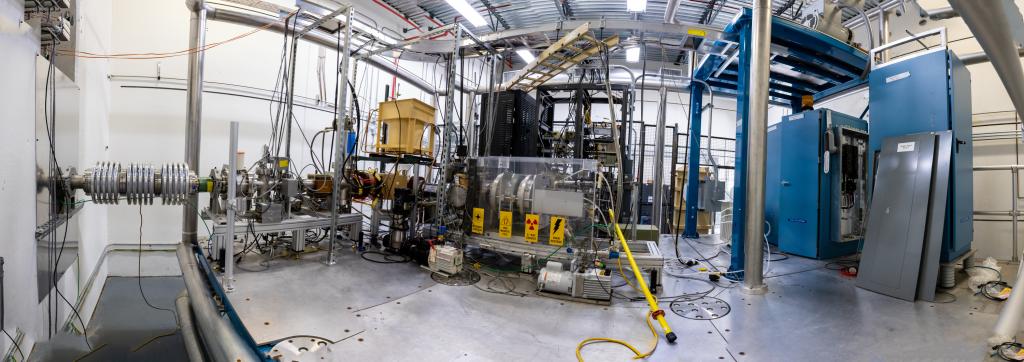
ORNL’s Multicharged Ion Research Facility, or MIRF, can produce intense beams of highly charged ions. It is primarily used to study atomic physics collision processes as beams of atomic ions interact with atoms, groups of atoms, or surfaces. The ion source and platform can also be used to produce intense beams of molecular ions.
Ion-Surface Scattering. The ion-surface scattering apparatus permits investigation of interactions over a wide range of energies (from a few electron volts to more than 10,000 electron volts), enabling quantitative investigation of a process that may transform minerals. The NASA Planetary Science Program funds a project studying the sputtering of minerals on Mercury by solar wind ions to determine whether the process is responsible for creation of hollows – clusters of rimless depressions that have flat floors and are surrounded by bright material.
Ion-Atom Merged Beams. The ion-atom merged-beam apparatus is unique in its ability to measure charge-exchange collisions of highly charged ions with ground state atomic hydrogen beams. The merged-beam technique explores charge exchange with atomic H featuring center-of-mass energies from sub electron volts related to potential energy (eV/amu) to 5000 eV/amu. NASA’s Astrophysics Research and Analysis Program has funded the installation of a Goddard Space Center/University of Wisconsin–Madison high-resolution x-ray microcalorimeter at MIRF which, like NASA missions of XRISM, Athena and Lynx, can measure the x-ray emission from charge exchange between highly charged ions and atomic H.
Sub-Barrier Nuclear Reactions. MIRF also provides a unique capability for performing near- and sub-barrier nuclear reaction measurements. This feat is possible due to the stable high beam intensities from the accelerator’s electron cyclotron resonance (ECR) ion source. The combined ECR ion source and platform produce sub-MeV beams of H+, D+, 3He2+, and 4He2+ at greater than 100 microamperes.
Ion Implantation and Radiation Damage. The ECR ion source provides ions ranging from metal ions (at several million electron volts) to high fluxes of noble gas ions (below 100 electron volts) using a de-acceleration technique. This achievement allows microstructure studies of ion irradiation damage to nuclear reactor alloys, implantation of targets for nuclear astrophysics experiments, and formation of nano-fuzz on tungsten by high-flux helium ions to understand extreme tokamak conditions.


